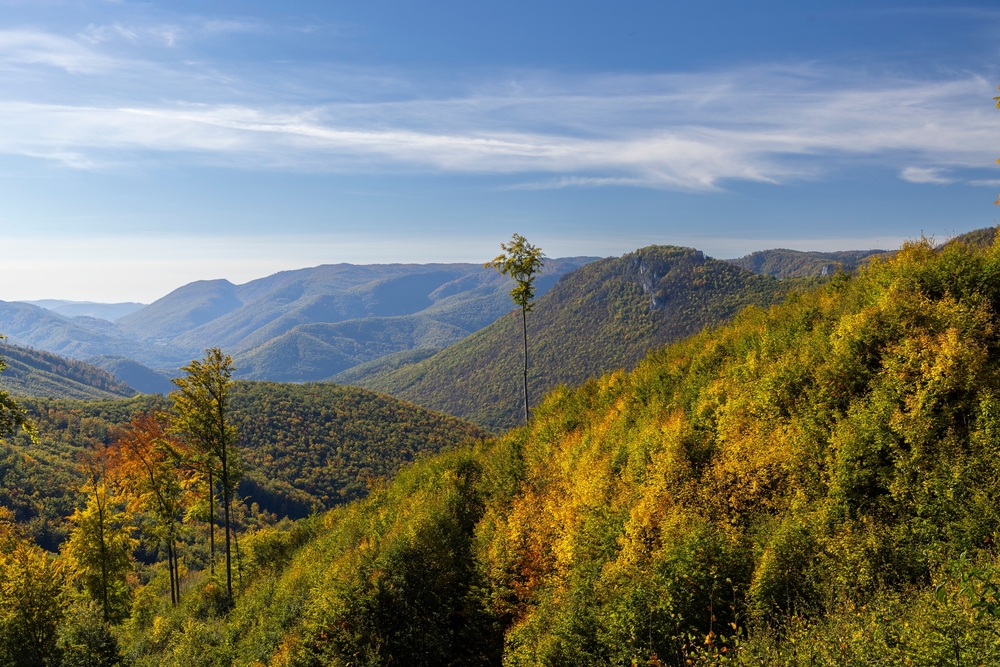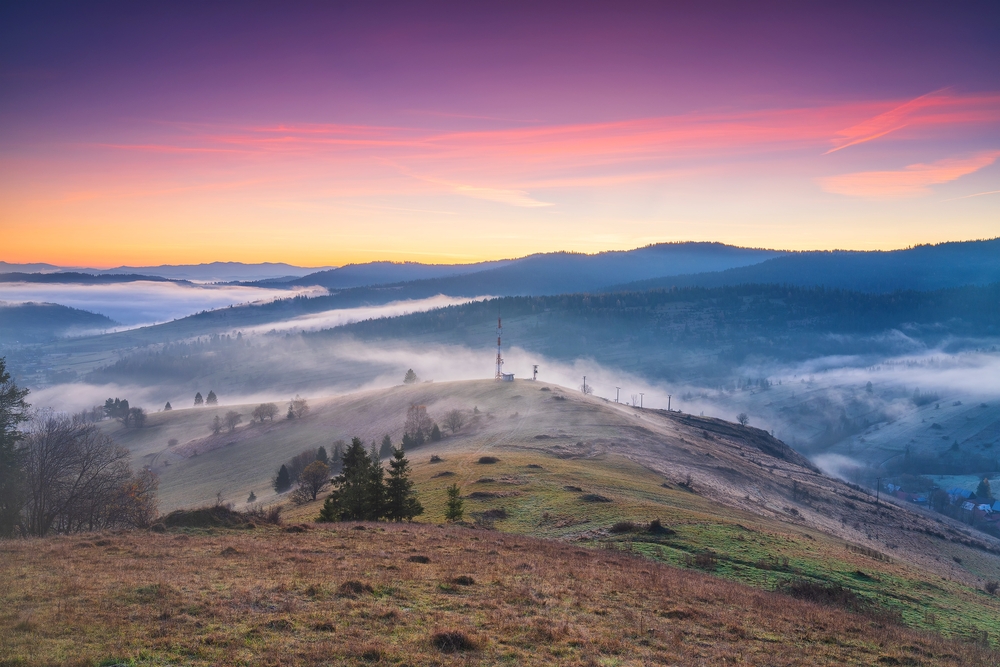Slovak Karst Overview
Slovak Karst National Park, known as Slovenský kras in Slovak, is a remarkable protected area in southern Slovakia, covering approximately 134 square miles (347 square kilometers).
Situated along the border with Hungary, this park is part of a larger karst landscape that extends into Aggtelek National Park, a neighboring protected area in Hungary. Recognized as a UNESCO World Heritage Site, Slovak Karst National Park is renowned for its extensive cave systems, deep gorges, and striking limestone plateaus that shape its distinctive terrain.
The park is characterized by its dramatic karst formations, including sinkholes, underground rivers, and some of the most impressive cave networks in Europe. Among the most famous of these is the Domica Cave, which is part of a system that stretches into Hungary’s Baradla Cave.
Other notable caves include Gombasecká Cave, Ochtinská Aragonite Cave, and Jasovská Cave, each offering unique geological wonders such as rare aragonite formations and underground lakes.
The park’s landscapes feature rolling hills, deep valleys, and sheer limestone cliffs, interspersed with vast meadows and deciduous forests dominated by oak and beech trees. In some areas, the karst terrain has created natural stone bridges and dramatic rock towers. The park’s biodiversity is equally impressive, supporting a wide variety of flora and fauna adapted to its rugged environment.
In the forests and rocky outcrops, visitors may encounter species such as the Eurasian lynx, red deer, and wild boar, while smaller mammals like the European badger and various bat species thrive in the park’s many caves. The park is also home to a diverse bird population, including golden eagles, peregrine falcons, and Ural owls.
The combination of cliffs and open meadows provides ideal nesting grounds for birds of prey, making it a prime destination for birdwatchers.
Among Slovak Karst National Park’s most popular attractions are its numerous caves, many of which are open for guided tours. The Domica Cave is particularly famous for its underground river, where visitors can take boat rides through its illuminated chambers.
The Ochtinská Aragonite Cave, with its rare white aragonite formations resembling delicate coral structures, is another must-see site. For those interested in history, the Jasovská Cave is notable for prehistoric human settlements and ancient inscriptions left by early visitors.
In addition to cave exploration, the park offers excellent hiking opportunities. Trails wind through lush valleys, across karst plateaus, and along scenic ridges that provide breathtaking views of the surrounding landscape. The Zadielska Gorge, one of the park’s most striking features, is a popular hiking destination with its towering cliffs and vibrant plant life.
Visitors can engage with the park through a variety of outdoor activities, including caving expeditions, guided nature walks, and wildlife observation. Educational programs and interpretive centers provide insights into the park’s unique geology and ecological significance. Cyclists can also explore certain areas of the park on designated trails, while photographers will find endless opportunities to capture the park’s dramatic landscapes and hidden underground wonders.
Conservation efforts in Slovak Karst National Park focus on protecting its fragile cave ecosystems and maintaining the balance between tourism and environmental preservation. Challenges such as habitat disturbance and illegal cave exploration have been addressed through stricter regulations and sustainable tourism initiatives.
The park’s UNESCO designation has also helped secure funding for research and conservation programs, ensuring that its extraordinary landscapes and biodiversity remain protected for future generations.
















































































